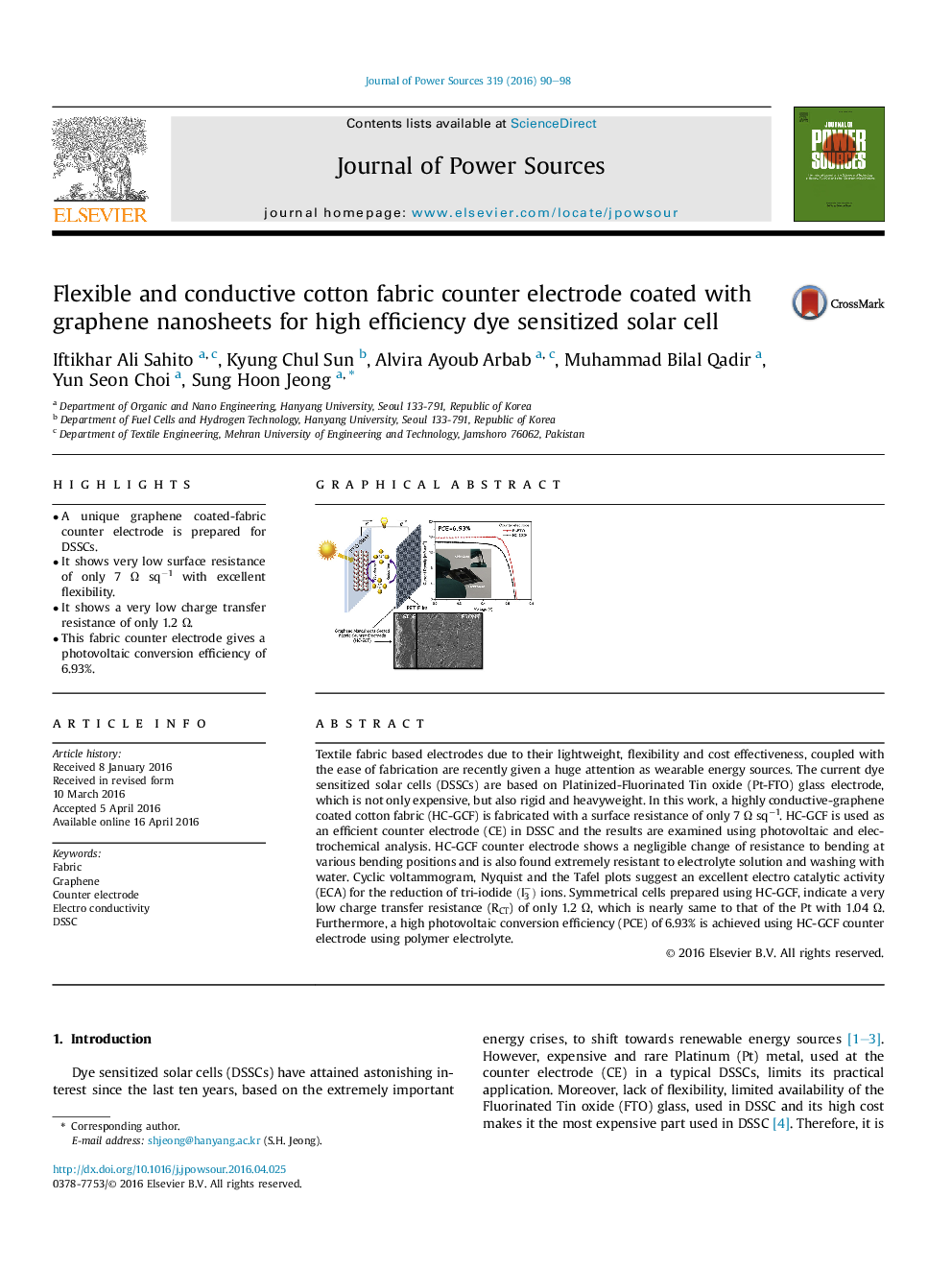| Article ID | Journal | Published Year | Pages | File Type |
|---|---|---|---|---|
| 1291992 | Journal of Power Sources | 2016 | 9 Pages |
•A unique graphene coated-fabric counter electrode is prepared for DSSCs.•It shows very low surface resistance of only 7 Ω sq−1 with excellent flexibility.•It shows a very low charge transfer resistance of only 1.2 Ω.•This fabric counter electrode gives a photovoltaic conversion efficiency of 6.93%.
Textile fabric based electrodes due to their lightweight, flexibility and cost effectiveness, coupled with the ease of fabrication are recently given a huge attention as wearable energy sources. The current dye sensitized solar cells (DSSCs) are based on Platinized-Fluorinated Tin oxide (Pt-FTO) glass electrode, which is not only expensive, but also rigid and heavyweight. In this work, a highly conductive-graphene coated cotton fabric (HC-GCF) is fabricated with a surface resistance of only 7 Ω sq−1. HC-GCF is used as an efficient counter electrode (CE) in DSSC and the results are examined using photovoltaic and electrochemical analysis. HC-GCF counter electrode shows a negligible change of resistance to bending at various bending positions and is also found extremely resistant to electrolyte solution and washing with water. Cyclic voltammogram, Nyquist and the Tafel plots suggest an excellent electro catalytic activity (ECA) for the reduction of tri-iodide (I3−) ions. Symmetrical cells prepared using HC-GCF, indicate a very low charge transfer resistance (RCT) of only 1.2 Ω, which is nearly same to that of the Pt with 1.04 Ω. Furthermore, a high photovoltaic conversion efficiency (PCE) of 6.93% is achieved using HC-GCF counter electrode using polymer electrolyte.
Graphical abstractFigure optionsDownload full-size imageDownload as PowerPoint slide
